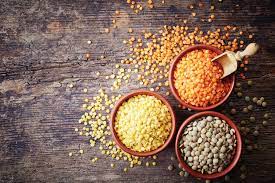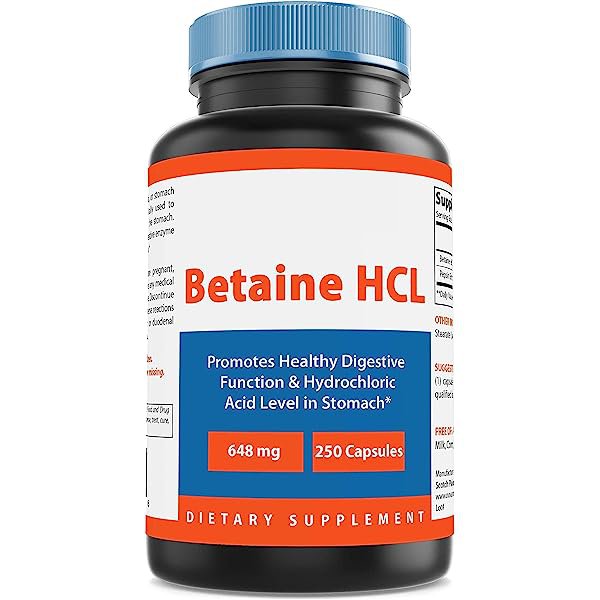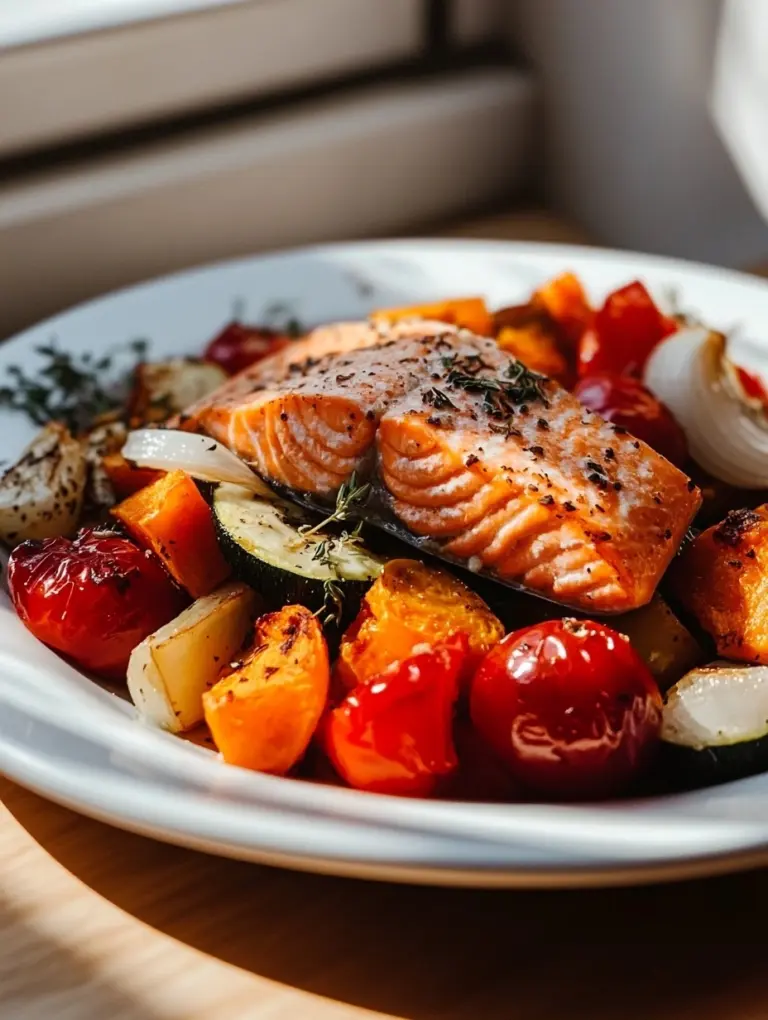“LENTILS – THE TINY TITANS OF NUTRITION – A BALANCED LOOK AT THEIR SUPERFOOD STATUS”
Let’s tackle lentils – the humble legume that’s often whispered…
Let’s tackle lentils – the humble legume that’s often whispered about in hushed tones as a “superfood.” But are lentils really deserving of this elevated status? Are they some kind of nutritional miracle, or just another bean in the pod, so to speak? And more importantly, are they good for us, especially those of us who are focused on fitness and building a body that’s both strong and healthy, particularly as we navigate the over-50s fitness landscape?
Because let’s be honest, the term “superfood” gets thrown around a lot these days, doesn’t it? Marketing gurus love to slap that label on anything that sounds remotely healthy, often inflating expectations and sometimes, frankly, misleading us a bit. So, before we get swept away by the superfood hype, let’s take a down-to-earth, no-nonsense look at lentils and see if they truly live up to the buzz.
In this guide, we’re going to cut through the noise and get to the heart of the matter. We’ll explore the good, the bad, and the… well, slightly less glamorous aspects of lentils. We’ll dive into their impressive nutritional profile, uncover the real benefits they offer (and they are significant!), and address some of the potential drawbacks that you might have heard about (like those pesky “anti-nutrients” and digestive issues). And crucially, we’ll figure out how to eat lentils the right way to maximize their advantages and minimize any potential downsides. Because just like any food, even the healthiest ones, it’s all about balance, preparation, and understanding how they fit into your individual diet and fitness goals.
The Lentil Love-In: Unpacking the Impressive Benefits – Why These Legumes Deserve Your Attention
Okay, let’s start with the good stuff, because there’s a lot to love about lentils. These unassuming little legumes are nutritional powerhouses, packing a serious punch when it comes to health and fitness benefits. They’re not just some bland, boring side dish – they’re incredibly versatile and can be a real game-changer in your diet. Let’s unpack the lentil love-in and see why they deserve your attention:
Nutrient-Dense Dynamite: A Mini Multivitamin in a Legume: When people talk about “nutrient-dense” foods, lentils should be right up there at the top of the list. Seriously, these little guys are jam-packed with essential vitamins, minerals, and macronutrients – it’s like getting a mini-multivitamin in every serving! Let’s break down the nutritional dynamite in a cup of cooked lentils:
Protein Powerhouse (Around 18g per cup): Protein is the king (or queen!) of muscle building and repair, and lentils are surprisingly rich in plant-based protein. While they’re not quite as protein-dense as meat or whey protein, they are a fantastic source of protein, especially for vegetarians, vegans, or anyone looking to incorporate more plant-based protein into their diet. That 18g per cup is a significant contribution to your daily protein needs, helping to support muscle growth, recovery, and satiety (keeping you feeling full and satisfied). For us over 50s, maintaining muscle mass is crucial, and lentils are a delicious and accessible way to boost our protein intake.
Fibre Fiesta (Over 15g per cup!): Fibre, fibre, fibre – we can’t sing its praises enough! And lentils are absolutely loaded with it. That over 15g per cup is a massive amount of fibre – we’re talking about nearly half of the recommended daily intake for many adults in just one serving! Fibre is a superstar for so many reasons: it promotes digestive health (keeping things regular, if you know what I mean!), it helps regulate blood sugar levels (preventing those energy crashes and cravings), it lowers cholesterol (supporting heart health), and it keeps you feeling full and satisfied (essential for weight management). For bodybuilders and fitness enthusiasts, fibre is crucial for optimal digestion and nutrient absorption, and lentils deliver it in spades.
Iron Fortress: Iron is essential for oxygen transport, carrying oxygen to your muscles so they can work efficiently during workouts. Iron deficiency can lead to fatigue and impaired performance, something we want to avoid! Lentils are a good source of non-heme iron (non-heme iron is a type of iron found in plant-based foods, such as vegetables, fruits and nuts). While non-heme iron is not as easily absorbed as heme iron (from animal sources), pairing lentils with Vitamin C-rich foods (like bell peppers or lemon juice) can significantly boost iron absorption. For vegetarians and vegans, lentils are a particularly important source of iron.
Folate Fuel (Excellent Source of Folate/Vitamin B9): Folate, also known as Vitamin B9, is a B-vitamin that’s crucial for cell growth and division, DNA synthesis, and red blood cell formation. It’s particularly important for women of childbearing age, but it’s vital for everyone’s health. Lentils are an excellent source of folate – just one cup provides a significant chunk of your daily needs. For bodybuilders, folate supports muscle tissue repair and growth, and adequate red blood cell production is essential for oxygen delivery to working muscles.
Manganese Marvel (Rich in Manganese): Manganese is a trace mineral that’s often overlooked, but it plays a vital role in bone formation, wound healing, metabolism, and antioxidant function. Lentils are a rich source of manganese, contributing to overall health and well-being.
B Vitamin Bonanza (Good Source of Various B Vitamins): Alongside folate, lentils also provide other important B vitamins, including thiamine (B1), riboflavin (B2), niacin (B3), pantothenic acid (B5), and pyridoxine (B6). As we discussed in the vitamins blog, B vitamins are crucial for energy production, nerve function, and various metabolic processes. Lentils contribute to your overall B vitamin intake, supporting energy levels and optimal bodily function.
Potassium Powerhouse (Good Source of Potassium): Potassium is an electrolyte that’s essential for muscle function, nerve function, blood pressure regulation, and fluid balance. Adequate potassium intake is important for preventing muscle cramps, supporting hydration, and maintaining overall electrolyte balance, especially crucial for athletes who lose electrolytes through sweat during exercise. Lentils are a good source of potassium, helping to replenish this vital electrolyte.
It’s like a nutritional symphony in a tiny legume! Lentils aren’t just “good for you” – they are packed with specific nutrients that are directly beneficial for fitness, muscle building, energy levels, and overall health, especially as we navigate the over-50s fitness journey.
Heart Health Hero: Fibre and More for a Happy Heart: We all know heart health becomes increasingly important as we get older, and lentils are a fantastic food to support a healthy cardiovascular system. Their high fibre content is a major player here. Soluble fibre, abundant in lentils, is particularly effective at lowering LDL cholesterol (“bad” cholesterol), a key risk factor for heart disease. Fibre binds to cholesterol in the digestive tract and prevents its absorption into the bloodstream, helping to keep your cholesterol levels in a healthy range. But it’s not just the fibre – lentils also contain other heart-healthy compounds, including potassium (which helps regulate blood pressure) and plant sterols (which can also help lower cholesterol). Incorporating lentils regularly into your diet is a delicious and proactive way to show your heart some love.
Budget-Friendly and Pantry-Perfect: Good for Your Wallet and Your Waistline: Let’s be real, eating healthy can sometimes feel expensive, right? Superfoods often come with super-high price tags. But lentils are a delightful exception! They are incredibly affordable, especially compared to many other protein sources like meat and fish. A bag of dried lentils can last you ages and provide numerous meals for a fraction of the cost of meat. Plus, they are pantry-perfect! Dried lentils have a long shelf life, making them a convenient staple to keep on hand for quick and healthy meals. No need to worry about them spoiling in the fridge. And their versatility is another huge bonus. Lentils can be used in so many different dishes, from soups and stews to salads, curries, veggie burgers, and even lentil loaves! They effortlessly adapt to various cuisines and cooking styles, making them a truly versatile and budget-friendly ingredient to incorporate into your diet.
The Lentil Lowdown: Addressing the Drawbacks – Navigating the Potential Pitfalls
Okay, we’ve sang the praises of lentils, and rightly so! But let’s be balanced and address some of the potential drawbacks that are sometimes mentioned. Because no food is perfect for everyone, and it’s important to be aware of any potential downsides, even with superfoods like lentils. Here are some of the common concerns about lentils, and how to navigate them:
Anti-Nutrient Antagonists? Understanding Lectins and Phytates (and How to Tame Them): You might have heard whispers about “anti-nutrients” in lentils, particularly lectins and phytates. These are naturally occurring compounds found in many plant foods, including legumes, grains, and nuts. They are sometimes labelled “anti-nutrients” because they can, in theory, interfere with the absorption of certain nutrients in the gut. Lectins, for example, might bind to calcium, zinc, and iron, potentially reducing their absorption. Phytates can bind to minerals like iron, zinc, calcium, and magnesium, also potentially reducing their bioavailability.
Now, before you panic and banish lentils from your kitchen, here’s the good news: proper preparation methods can significantly reduce the levels of lectins and phytates in lentils, mitigating their potential effects. These “anti-nutrients” are largely deactivated by soaking, sprouting, and cooking. Soaking lentils before cooking, for example, can reduce lectin content. Cooking lentils thoroughly also breaks down lectins and phytates. For most people, with proper preparation, anti-nutrients in lentils are not a major concern. The benefits of lentils far outweigh any minor potential interference with nutrient absorption, especially when consumed as part of a varied and balanced diet. Think of it as a minor hurdle that’s easily overcome with a little bit of kitchen know-how. Don’t let the “anti-nutrient” label scare you away from these nutritional gems!
Digestive Dilemmas? Taming Bloating and Gas (and Making Lentils Gut-Friendly): Let’s be honest, legumes, in general, have a bit of a reputation for causing… shall we say… “digestive issues” in some people. Bloating, gas, stomach discomfort – we’ve all been there, right? Lentils, like other legumes, contain certain types of carbohydrates called oligosaccharides that can be difficult for some people to digest. These oligosaccharides pass undigested into the large intestine, where they are fermented by gut bacteria, producing gas as a by-product. Hence, the bloating and gas.
But fear not, there are strategies to make lentils more gut-friendly and minimize digestive discomfort! Here are some tips:
Soaking is Your Friend: Soaking lentils before cooking is key. Soaking helps to break down those oligosaccharides, making them easier to digest. Soak lentils in water for at least 4-8 hours, or even overnight. Drain the soaking water and rinse the lentils thoroughly before cooking.
Cook Them Thoroughly (Until Tender!): Undercooked lentils are harder to digest. Cook lentils until they are tender and easily mashed. Overcooking is better than undercooking when it comes to digestion.
Start Slow and Build Up Gradually: If you’re not used to eating lentils, introduce them into your diet gradually. Start with small portions and slowly increase your intake over time. This gives your gut bacteria time to adapt.
Add Digestive Herbs and Spices: Certain herbs and spices can aid digestion and reduce bloating. Try adding ginger, fennel seeds, cumin, coriander, or turmeric to your lentil dishes.
Consider Sprouting: Sprouting lentils before cooking can further reduce oligosaccharides and make them even easier to digest.
Listen to Your Gut: Everyone’s digestive system is different. Pay attention to how your body responds to lentils. If you experience persistent digestive discomfort, try reducing your portion sizes or experimenting with different preparation methods.
Don’t let the fear of bloating and gas deter you from enjoying lentils! With proper preparation and a little bit of experimentation, you can make lentils a delicious and gut-friendly part of your diet.
Incomplete Protein Puzzles? Completing the Amino Acid Picture: It’s true that lentils are considered an “incomplete protein source.” What does that mean? It means that lentils, on their own, do not contain all nine essential amino acids in sufficient amounts to meet human needs. Specifically, lentils are relatively low in methionine, an essential amino acid. Essential amino acids are those that your body cannot produce on its own, so you must get them from your diet.
However, the “incomplete protein” label can be a bit misleading, especially in the context of a varied and balanced diet. You don’t need to get all nine essential amino acids in every single meal! Your body can pool amino acids throughout the day. By combining lentils with grains or other protein sources throughout the day, you can easily create a “complete protein profile” and ensure you’re getting all the essential amino acids you need. This is the concept of protein combining or complementary proteins. Classic examples of lentil pairings that create complete proteins include:
- Lentils and Rice: A classic combination found in many cuisines worldwide.
- Lentils and Bread: Lentil soup with whole wheat bread, for example.
- Lentils and Quinoa: Another grain option that complements lentils well.
- Lentils and Nuts/Seeds: Adding nuts or seeds to lentil dishes can also help improve the amino acid profile.
For vegetarians and vegans, combining lentils with grains is a simple and effective way to ensure they are getting a complete protein profile. Even for meat-eaters, incorporating lentils alongside other protein sources in a varied diet is perfectly sufficient. Don’t let the “incomplete protein” label make you think lentils are somehow lacking in protein quality – they are a valuable and nutritious protein source, especially when combined with other plant-based foods.
Lentil Logistics: How Often Should You Dive into the Deliciousness? Finding Your Lentil Sweet Spot
So, we’ve established that lentils are nutritional powerhouses with a ton of benefits, and we’ve addressed some of the potential drawbacks. Now, the practical question: how often should you be eating lentils? What’s the optimal frequency to reap the rewards without overdoing it (or causing any digestive grumbles)? Here are some general guidelines, but remember, it’s always best to listen to your own body and adjust based on your individual needs and preferences:
For General Health and Well-being (Aim for Balance and Variety): For most people looking to incorporate lentils into a healthy, balanced diet, aiming for 2-3 servings of lentils per week is a great starting point. This frequency allows you to enjoy the numerous nutritional benefits of lentils without overwhelming your digestive system (especially if you’re new to legumes). Two to three servings per week will contribute significantly to your protein, fibre, iron, folate, and mineral intake, supporting overall health and well-being. Vary your lentil dishes and preparation methods to keep things interesting and prevent culinary boredom.
For Vegetarians and Vegans (Embrace Lentils as a Protein Staple): For vegetarians and vegans who rely on plant-based protein sources, lentils can be a more frequent staple in your diet. Consider incorporating lentils 3-4 times per week, or even more often, as a primary protein source. Just be sure to pair them with grains or other complementary protein sources throughout the day to ensure a complete amino acid profile. Experiment with different lentil varieties (red, green, brown, black) and culinary preparations to maximize variety and enjoyment. Lentil soups, stews, curries, salads, and veggie burgers can all be regular features in a vegetarian or vegan diet.
For Bodybuilders and Fitness Enthusiasts (Fuel Workouts and Recovery with Lentil Power): Lentils can be a valuable addition to a bodybuilder or fitness enthusiast’s diet, providing protein, complex carbohydrates, and fibre to fuel workouts and support recovery. Aim for 2-3 servings of lentils per week, strategically timing some of those servings around your workouts. For example, a lentil-based meal a few hours before a workout can provide sustained energy, and lentils can be included in a post-workout meal to contribute to protein intake and glycogen replenishment. Combine lentils with other protein sources to maximize muscle-building potential.
For Those with Digestive Sensitivities (Start Slow and Listen to Your Gut): If you know you have a sensitive digestive system or are prone to bloating and gas with legumes, start slowly and cautiously with lentils. Begin with just one serving of lentils per week, properly soaked and cooked, and see how your body responds. Gradually increase your frequency as tolerated, paying attention to any digestive discomfort. If you experience bloating or gas, try reducing portion sizes, ensuring thorough cooking and soaking, and incorporating digestive aids like ginger or fennel. Listen to your gut and find your individual lentil tolerance level.
The Lentil Lowdown: Superfood Status…
So, are lentils truly deserving of the “superfood” title? Based on their impressive nutritional profile, heart-health benefits, affordability, versatility, and eco-friendly nature, I’d say yes, lentils earn their superfood stripes! They are nutritional powerhouses packed with essential nutrients that are incredibly beneficial for overall health, fitness, and well-being, especially for us over 50s.
However, it’s important to approach the “superfood” label with a healthy dose of realism. No single food is a magical cure-all, and even superfoods like lentils have potential drawbacks that need to be considered. The presence of anti-nutrients and potential digestive issues are real, but they are manageable with proper preparation and mindful consumption. And the “incomplete protein” aspect is easily addressed by combining lentils with other protein sources in a balanced diet.
The key to enjoying lentils as part of a healthy diet lies in balance, variety, and understanding your individual needs and preferences. Don’t rely solely on lentils as your only source of nutrition but do embrace them as a valuable and delicious component of a varied and balanced eating plan. Experiment with different lentil recipes, preparation methods, and cuisines. Find your lentil sweet spot and discover how these little legumes can fuel your fitness journey, support your health, and add a whole lot of flavour and goodness to your plate.
Disclaimer: This blog post is crafted for informational purposes and isn’t an endorsement of any supplements. Consultation with professionals is vital when making health or athletic decisions.







